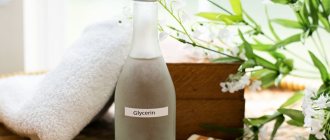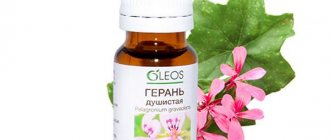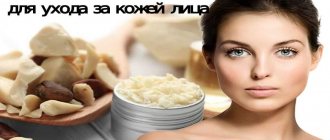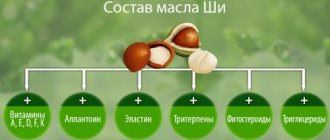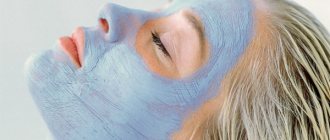Glycerin is a substance that is a colorless, syrupy liquid with a pleasant sweet taste. The substance is most widely used in the food industry: for example, you can find it in food products as a food additive under the index E422.
The food additive is introduced into products as a sweetener and a moisture level regulator. In addition, glycerin helps stabilize the liquid and fat in the medium. Glycerin is most often added to sweets.
The substance was first artificially synthesized 3 centuries ago. The substance was first used in the chemical and pharmaceutical industries; glycerin is also used to produce ordinary paper and explosives. After some time, experts found that glycerin has a positive effect on the skin - it makes the epidermis softer and more elastic, giving it a healthy glow. By the 80s of the last century, glycerin reached the peak of its popularity - it was at this time that it began to be used as a food additive E422. During work with the substance, more than 100 unique properties of the compound were discovered. Nowadays, glycerin is one of the most popular food additives, which can be found in almost every confectionery product. So, you can find glycerin in alcoholic and non-alcoholic drinks, cakes and pastries prepared with the addition of cream.
Glycerol molecule
What is glycerin? Formula
Glycerin is a completely organic compound that is obtained from vegetable fats. A little less often, animal fats are used to obtain the substance. For example, you can detect glycerin in lard.
The main property of glycerin that makes it popular in the food industry is its ability to dissolve almost any substance. It is worth noting that glycerin does not belong to the category of dangerous or harmful substances. All produced and imported glycerin must comply with GOST 6824–96.
Structural formula of glycerol C3H5(OH)3
The structural form of the substance consists of a chain represented by three carbon atoms, each of which, in turn, is connected to a hydrogen atom and a hydroxyl group. Glycerin formula:
C3H5(OH)3
Externally, glycerin is a colorless viscous liquid that resembles a sweet, thick syrup. The substance has no aroma at all.
Description of release form
Medical glycerol has two dosage forms:
- rectal suppositories;
- solution intended for local and external use.
Suppositories have a pointed torpedo-shaped shape, their color is close to white. Children's candles are produced weighing 1.53-1.69 grams, candles for adults weigh from 2.61 to 2.89 grams.
The liquid form of the drug is a syrupy, transparent, colorless liquid of viscous consistency, odorless and with a sweetish taste. The medium of an aqueous solution of glycerol is neutral.
Chemical properties of glycerin
Glycerin is one of the most prominent representatives of the group of trihydric alcohols. It is characterized by the same reactions as monohydric alcohols.
The reaction of glycerol occurs most clearly with the addition of active metals - sodium and potassium: these substances replace hydrogen in hydroxyl groups, and also take an active part in dehydration reactions, which culminate in the formation of an ester.
Glycerin is a component of a long list of naturally occurring esters. Dehydrated glycerin perfectly absorbs moisture, and when it comes into contact with the skin, it can relieve discomfort from burns. The additive is often used for the production of cosmetics and in the food industry.
The chemical properties of glycerol are similar to those found in polyhydric alcohols. When reacting with hydrogen halides or phosphorus halides, mono- and dihalohydrins are formed.
Pharmacodynamics and pharmacokinetics
In its pure form, glycerol irritates the skin, but this effect completely disappears when the substance is diluted with water, petroleum jelly or lanolin . Used as an external agent, glycerol has a dermatoprotective effect, softens and restores the skin.
The antiseptic properties of glycerol make it possible to use it to prevent skin wounds from becoming infected.
Rectal use of glycerol provokes a laxative effect. The product softens feces, gently irritates the intestinal mucosa and stimulates the contractility of the walls of the rectum.
Glycerin (for internal use) can increase osmotic pressure and reduce ocular and intracranial pressure. The use of liquid glycerin orally also helps reduce cerebral edema.
Physical properties of glycerin
The density of glycerol is 1.261 g/cm3, the molar mass of the substance is 92.1 g/mol, the temperature at which the compound begins to boil is 290 degrees.
Pure glycerin practically does not freeze, from this we can conclude that the ability of the substance in question to freeze is determined by its concentration. The simplest representative of the group of trihydric alcohols is a transparent liquid. It is often mixed with ordinary water in different proportions.
Glycerin has a rich sweet taste. When propylene glycol is added, the liquid becomes more fluid. When the temperature rises too high or when ignited, the substance begins to burn with a blue flame.
Use in the food industry
Dairy products, including cheese, yogurt, milk powder, and cream, are among the potential sources of glycerol. This nutritional supplement can also be found in condensed milk, whey products, pudding and milk drinks. Processed meats, soy products, processed seafood, dried eggs, canned eggs and egg desserts may also contain this additive.
Vegetables and fruits generally do not contain glycerin unless they are processed. Some examples of products that may contain E422 include:
- dried vegetables;
- canned vegetables;
- processed fruits;
- pre-cooked vegetables;
- sauces containing vegetables.
- alcoholic drinks;
- sauces, vinegar, mustard, seasonings;
- peanut butter;
- candies.
Chemical reactions with glycerin
Glycerin is obtained through the hydrolysis of fats; propylene is also used as a raw material. Glycerin was first obtained in 1779 by heating vegetable fat obtained from olive oil and adding lead oxide to it. The author of this method is considered to be the Swedish researcher Karl Scheele.
Glycerin is also obtained from acetone: when using this method, the substance is reduced with hydrogen to release isopropyl alcohol. At the next stage, a water molecule is split off using the dehydration method, which is then subjected to a chlorination procedure. The resulting substance is processed to obtain trichloropropane. At the final stage, the mixture is heated to carry out a hydration procedure, during which all chlorine molecules are replaced by hydroxyl groups.
Synthesis of glycerol by reduction of acetone:
CH2Cl-CHCl-CH2Cl + 3H2O → CH2OH-CHOH-CH2OH + 2HCl
When interacting with various catalysts, which can be acids, alkalis and enzymes, a fat saponification reaction occurs:
C3H5(OCOC17H35)3+3H2O → C3H5(OH)3 + 3C17H35COOH
Glycerin reacts with active metals to form salts - glycerates. Glycerates are similar to ethylene glycol and ethyl alcohol.
HO-CH2-CH2-OH + 2Na → H2↑+ NaO-CH2-CH2-ONa
When sodium hydroxide or any other active metal hydroxide is added, sodium glycerate and plain water are formed.
To obtain polyhydric alcohol, copper hydroxide is added to glycerin. As a result, copper glycerate and water are released.
C₃H₅(OH)₃ + Cu(OH)₂ → Cu(NH₂CH₂COO)₂ + H2O
Glycerol also undergoes polycondensation reactions, upon completion of which a mixture of polyglycerides is formed. To do this, the raw materials are heated to 300 degrees in a slightly alkaline environment.
special instructions
Glycerin - what is it?
Glycerin is an organic compound that belongs to the class of substances polyhydric alcohols .
Since the compound has 3 hydroxyl groups (-OH), it is a trihydric alcohol or, in other words, a triol (compounds with 2 hydroxyl groups - for example, ethylene glycol - are called dihydric alcohols or diols).
Being the simplest representative of the group of trihydric alcohols, the compound is characterized by chemical properties typical of the latter.
The name of the substance in Latin is Glycerinum. Product name (European Pharmacopoeia) - Glycamed.
Its structural formula is as follows:
CH2 - CH - CH2 | | | OH OH OH
Chemical molecular formula of the substance: HOCH2-CH(OH)-CH2OH.
Molar mass - 92.094 g/mol.
In nature, the compound occurs widely in the form of glycerides (or acylglycerols ), which are esters formed by organic or mineral acids and glycerol.
Glycerides, in turn, are a key component of oils and fats of natural origin.
For example, one of the most common long-chain triglycerides, all three chains of which contain oleic acid , is glycerol trioleate. Its natural sources are peanut, corn, olive, soybean, and sunflower oils.
Homologues are butanetriol-1,2,4 and pentantriol-1,3,5.
Obtaining glycerin
Industrial glycerin is obtained as a by-product of saponification of edible fats, which in the presence of various catalysts (enzymes, acids, alkalis) are broken down into glycerol and aliphatic carboxylic (fatty) acids.
To obtain glycerol and soap, saponification reactions of glycerol tristearate (glycerol ester of stearic acid) with sodium hydroxide are used.
In industry, synthetic methods for producing the substance are increasingly used, one of which is chlorohydrin.
of propene (propylene) into the simplest unsaturated aldehyde propenal (acrolein) is also used .
Other ways to obtain the substance are:
- method of glycol fermentation of sugar;
- hydrolysis of starch.
Distilled glycerol is obtained in accordance with GOST 6824-96
Physical properties
In its pure form, glycerol is transparent, odorless, tastes sweet, and is hygroscopic (that is, it is capable of absorbing water vapor from the air up to 40% by weight). It is soluble in water: the substance mixes well with water in various proportions, which is accompanied by the release of heat and a decrease in volume (contraction).
Wikipedia states that glycerol is highly soluble in water, alcohols, moderately soluble in ether and ethyl acetate, and insoluble in most hydrocarbons, ethers and chloroform.
The melting point of the substance at normal pressure is 17.8 degrees C, the boiling point is 290 degrees C (with weak decomposition). The density of glycerol is 1.26 g/cm³.
The viscosity of glycerol is determined by the dynamic viscosity coefficient, which changes depending on temperature. Thus, the viscosity index at 0°C is 12100 mPa*s, at 40°C - 330 mPa*s, and at a temperature of 200°C - 0.22 mPa*s.
Chemical properties of Glycerin, what does glycerin react with?
Despite the fact that it is the simplest trihydric alcohol, glycerol undergoes chemical reactions that are characteristic of monohydric alcohols.
Glycerol is capable of interacting with a large number of organic and inorganic compounds, resulting in the formation of complex, simple (aliphatic and aromatic) esters, as well as metal acylglycerols.
Glycerol reacts with sodium, which replaces all three hydrogen atoms in the -OH hydroxyl groups.
The substance has the ability to form azeotropic mixtures with naphthalene, its individual derivatives and a number of other substances.
Glycerol forms 3 series of metal derivatives - glycerates. Moreover, they are formed even when the substance interacts with heavy metal oxides. This is evidence that the properties that characterize acids are more pronounced in it than in monohydric alcohols.
The substance is also capable of reacting with hydrogen halides and interacting with nitric acid. The result of interaction with hydrohalic acids and halides are mono- or dihalohydrins, and with nitric acid - trinitroglycerin (a heavy oily substance with explosive and, to some extent, medicinal properties).
The reaction of glycerol with copper hydroxide produces a blue solution. When polyhydric alcohols react with Cu(OH)2 in the presence of an alkali, the hydroxide dissolves, and the reaction product is a transparent blue liquid.
This is a qualitative reaction for glycerol, which is used not only for the detection of glycerol, but also for the detection of other polyhydric alcohols containing hydroxyl groups (-COOH) at adjacent carbon atoms.
When interacting with inorganic and carboxylic acids, esters (complete and incomplete) are formed; as a result of dehydration of glycerol, acrolein is obtained.
Like other alcohols, glycerol undergoes oxidation. Depending on what substance is used as an oxidizing agent, as a result of this reaction one can obtain: glyceraldehyde, glyceric, mesoxalic or tartronic acid, dihydroxyacetone.
Under the influence of potassium permanganate or potassium dichromate, glycerol is oxidized to carbon CO2 and hydrogen H2O.
Reacting with bromine water, glycerol is oxidized to dihydroxyacetone. This is the Denizhe reaction, which is one of the methods for the qualitative and quantitative determination of glycerol. The resulting dihydroxyacetone is reduced using Nessler's reagent and Fehling's solution.
How to recognize glycerin?
To recognize glycerol, the reagent is copper hydroxide. The formula of the reagent for recognizing glycerol is Cu(OH)2.
To recognize the substance, you need to take CuSo4 and NaOh. Their interaction produces freshly precipitated copper hydroxide, which, when reacting with polyhydric alcohols, forms a transparent blue solution.
What is glycerin used for?
Glycerol industry, paint and varnish industry, electrical and radio engineering, tobacco and military industries, agriculture. In addition, the product is used for blackening rubber with your own hands.
Glycerol monostearate is a high-quality food emulsifier. In addition, it has the properties of a dispersant and stabilizer. Having a rejuvenating effect, it helps maintain the freshness of products, stabilizes and improves the structure of fats.
Glycerin in cosmetics ensures the binding of free water, thus eliminating the need to add synthetic preservatives to the latter and providing products with a shelf life long enough for their use.
In addition, it allows the effective ingredients of a cosmetic product to be transported directly to the skin so that they can exert their beneficial properties where needed.
Glycerol has also found use in everyday life. It helps remove “difficult” stains from clothes, is used as a polish for furniture, mirrors and parquet, and also to restore the appearance of leather goods.
Tourists use glycerin and potassium permanganate to start a fire: they put a little potassium permanganate on the easily flammable material and then add one or two drops of the substance. After about 15 seconds, smoke appears and spontaneous combustion occurs.
Glycerol is used to moisten hookah tobacco. At the same time, it is better to add a product intended for smoke machines to the hookah, since it is originally intended for evaporation. Adding glycerol to tobacco allows you to:
- increase its smokiness;
- revive old and dried out tobacco.
Glycerol is used to give the required density to the solution for soap bubbles.
There are a huge number of resources on the Internet that tell you how to make a good soap solution at home for a children's party. One of the most popular recipes for soap bubbles is a recipe that involves mixing ⅔ cup of dishwashing liquid (preferably with the least amount of impurities) with 4 cups of boiled or distilled water and 40-60 ml of glycerol.
Many people are interested in what can replace glycerol at home. Regular sugar has similar properties to this substance. It also increases the density of the finished solution and improves the quality of the bubbles.
Glycerol derivatives
Glycerides are derivatives of glycerol.
Glycerides, or acylglycerols as they are also called, are esters obtained by mixing glycerol esters and fatty acids.
There are 3 main types of glycerides:
- monoglycerides - one hydrogen atom is replaced in them;
- diglycerides - 2 hydrogen atoms are replaced in them;
- triglycerides - 3 hydrogen atoms are replaced in them.
Triglycerides predominate in fats of plant and animal origin. When exposed to natural enzymes, triglycerides are hydrolyzed to mono- and diglycerides.
Alkyd resins (plastics) and cellophane
When reacted with a dibasic acid (such as phthalic), glycerin forms a class of products called alkyd resins, which are used in surface coatings and paints. It is a softener and plasticizer (for example, cellophane), giving flexibility, softness and strength. Used in meat casings, collagen casings used in medicine and other packaging materials.
Glycerin production
At the moment, there are many ways to produce glycerin on an industrial scale. The most popular of all methods is synthesis using propylene, which is extracted from petroleum cracking products.
Active production of glycerin began in the middle of the last century. Prior to this, chlorine was mainly used as the main raw material for the production of the substance in question. No byproducts were formed during the reaction, but the process itself was highly toxic.
In the modern world, chlorine as a raw material for the production of glycerin has given way to propylene.
In the USSR, it was practiced to obtain glycerin from propylene oxide and hydrogen peroxide. This technology was characterized by simplicity, as well as the absence of the need to create special conditions - increased pressure and temperature. With the development of industry and a deeper study of the characteristics of fatty acids, methods for producing glycerol have been improved.
The most widely used method is the breakdown of fats in autoclaves under a certain pressure in the presence of zinc, potassium or magnesium oxide (the pressure indicator is different for each compound). The whole process takes about 10-12 hours.
To obtain glycerol from fat, the Krebitz method is used. It involves treating fats with lime milk - it saponifies fats, resulting in the formation of calcium soap and glycerin.
Glycerin for cleaning the house from dust
The product can be used not only for skin care, but also at home. This is an excellent solvent that can deal with a number of stains.
Glycerin for cleaning the house from dust:
- It is used for cleaning floors, because this is an ideal option for adding shine to parquet or laminate floors. Glycerin is also added to special floor cleaning products. This allows you to acquire surfaces with a beautiful polished look and shine.
- To do this, you need to dissolve 20 ml of glycerin in 3 liters of water. The water needs to be hot. Rinse the floor cleaning cloth in this solution and wipe the surface. Before doing this, it is advisable to clean with a vacuum cleaner or broom so that no dust or dirt remains on the surface.
- Glycerin will help deal with stains on wooden furniture. To do this, dissolve 5 ml in 200 ml of warm water. Pour the liquid into a spray bottle and spray onto the surface of the furniture. Using microfiber or soft flannel, thoroughly rub the surface until shiny.
Means
Effects of glycerin on the body
Glycerin has been used for many years in both the food and cosmetic industries. Moreover, this is not some rare component that can only be found in specialized products - it is sufficient in ordinary food products and skin care cosmetics that you use every day. For many years, neither doctors nor ordinary people had any questions about the compound - by default it was considered completely safe for human health. Doubts about this arose when vaping liquids began to be produced based on glycerin. However, they use food grade glycerin, similar to what people consume in confectionery products, and this substance does absolutely no harm to human health. Glycerin can only be harmful if you smoke heavily, since the substance draws moisture from the mucous membranes, drying them out - this often causes dry mouth and cough.
As mentioned above, glycerin is widely used in the production of skin care cosmetics. The fact is that the substance can have a miraculous effect on the skin. The principle of action of glycerin is close to the principle of action of hyaluronic acid. These two substances are linked by increased hygroscopicity. Glycerin, like hyaluronic acid, saturates the upper layers of the skin with water and draws out excess air from them. In addition, it opens water pathways to the deeper layers of the skin. Thus, one molecule of glycerol is capable of attracting 10 molecules of water, increasing its volume at least twice. Glycerin forms a film on the skin that helps moisturize first the upper and then the lower layers of the skin.
It is worth noting that the compound has its own side effects - for example, glycerin can provoke the formation of irritation on sensitive skin.
In the food industry, glycerin is used to improve the taste of manufactured products. The substance also takes on the role of a thickener and sweetener. Glycerin does not belong to the category of toxic additives - it has absolutely no carcinogenic, mutagenic or other harmful effects on the human body. In the gastrointestinal tract, it is formed during the breakdown of fats that enter the body with food. It is worth noting that glycerin helps reduce intracranial pressure.
Areas of use
Not all people know why and what glycerin is needed for. It is used in various fields and everyday life, due to its chemical and physical properties. Glycerin imparts softness to various types of textiles and also regulates the moisture content of tobacco. It is often included in detergents and crop treatment products.
Areas of application of the substance:
- Food industry. Glycerin is used as a sweetener in the creation of various foods and beverages, and as a thickener in liqueurs. It is also an excellent moisturizer and solvent. The organic compound is included in low-calorie foods instead of fat. In the food industry, the component is designated as E422. It can replace sugar and prevent the growth of bacteria.
- Cosmetics. Girls are often interested in where to get glycerin of plant and animal origin. The component is included in high-quality personal hygiene products. It is used in moisturizing cosmetics for face and body care, shaving creams and other products. The substance is considered one of the main components of glycerin soap, which is intended for dry and sensitive skin. It is used for irritation, itching of the skin and peeling.
Since the substance does not react with oils and has high oxidation stability, it can be used as a lubricant for mechanical parts exposed to gasoline. The organic compound is used in the technical industry in the processing of aluminum and in the manufacture of resins and plastics.
It is used in printing houses when applying paints, to create tracing paper, napkins and parchment paper.
Useful properties of glycerin
Glycerin has a long list of beneficial properties. So, it has the following effects on the skin of the face and body:
- moisturizes and attracts moisture, makes the skin more elastic and fresh;
- protects the skin from the negative effects of ultraviolet radiation and other harmful environmental factors;
- cleanses the skin of dirt and toxins, normalizes metabolism, helps accelerate the regeneration process;
- removes pigment spots, makes scars on the surface of the skin less noticeable;
- helps heal cracks in elbows and heels;
- reduces the effects of allergies;
- rejuvenates, makes wrinkles less noticeable.
In addition, glycerin also benefits other systems of the human body. Thus, it normalizes metabolism and accelerates the process of fat breakdown.
Glycerin is often used as an excipient to treat a long list of dermatological diseases. Thus, the compound in question is included in drugs that are prescribed as part of complex therapy.
With regular use of products containing glycerin, the elasticity of the skin and its general condition improves. Thanks to glycerin, the epidermis retains moisture longer.
Lotions for use on facial skin
There are several other ways to use glycerin on your face. Experts call one of them the use of homemade lotions. Let's find out a couple of proven recipes:
- To wipe the skin of the face and neck, instead of washing with plain water, you can use a mint composition. Dry herb in a volume of 1/2 cup must be poured with boiling water to a full glass and left for 24 hours under a towel. After straining the product, add 20 ml of glycerin to it.
- Chamomile is used to wipe the skin in the morning and evening for cleansing purposes. It is necessary to pour three parts of infused chamomile flowers with one part of vodka. Add one teaspoon of glycerin to a glass of the resulting product.
- A cleansing and at the same time refreshing product prepared at home will take about an hour of your time, but will definitely give a positive result. You need to take two tablespoons of dried herbs that suit your skin type, add 200 ml of hot water, then boil for about half an hour. The product must be left to cool under the lid, then strain and add to it one teaspoon of glycerin and one tablespoon of cologne.
- In order to tone and moisturize the skin, you need to cut a lemon, pour 250 ml of cold water into it and leave in a dark place for five to seven days. After straining the infusion, you need to add 5 ml of glycerin to it.
Harm of glycerin and contraindications to its use
Glycerin is not toxic, but under certain conditions it can cause allergic reactions. Because of this, drugs containing large amounts of glycerin are recommended to be introduced into your diet gradually, carefully monitoring your body’s reaction. Experts recommend starting prem with a small amount of glycerin diluted with a large volume of water.
If you have an individual intolerance or consume too much glycerin, you may experience mild dizziness, headaches, vomiting, nausea and thirst. The fact is that glycerin is not absorbed in large quantities, so it can lead to diarrhea and bloating.
Glycerin can have negative effects on the body with prolonged use. So, in the case of prolonged use of glycerin, sensitive skin becomes inflamed and melanin is washed out of the epidermis.
It is strictly not recommended to mix glycerin with silicone - otherwise a toxic substance will be formed.
There is a common belief that glycerin does not moisturize, but rather dries out the skin. This is indeed possible, but only if you are constantly exposed to very dry air conditions (relative humidity below 65%). Therefore, experts recommend not to abuse glycerin in winter.
To prevent negative consequences, it is important to monitor the characteristics of the cream used: cosmetics with a large amount of glycerin are best used in the hot season, but in winter, give preference to cosmetics that contain less of it.
There is no information about the effect of glycerin on pregnant and lactating women, and there are no contraindications. But experts recommend limiting the consumption of the substance during pregnancy.
It is necessary to take medications with glycerin only according to the instructions included with the medicine. Some medications must be shaken before use. If you use skincare products with glycerin, use it only after first cleansing your skin. It is important to ensure that medications and skincare products do not come into contact with the eyes, mouth and nose.
Stains from ink, berries, tea and coffee
Where is glycerin used, except for cosmetology? In everyday life, the product can help get rid of dirt. Each type of stain on clothing requires its own method of removal:
- To remove traces of berries, you can take 30 g of the substance and mix it with the yolk. Apply the prepared mixture to the stain for several hours, then rinse the solution with water. Then wash the item as usual.
- You can also remove traces of berries by moistening them with glycerin, and after an hour and a half, rinse your clothes in salt water.
- To clean wool or silk from the same stains, you should take one part each of glycerin and ammonia and three parts of vodka. Apply the product to the stain for two hours and wash the product.
- To get rid of coffee or tea stains, the substance should be heated in a water bath and rubbed onto the stain using a tampon or cloth. After half an hour, the product must be washed off and the clothes dried.
- Contaminants from chocolate or cocoa liquids can be removed by mixing glycerin with salt to form a paste. When the stain visually begins to disappear, the item should be washed.
- A mixture of glycerin and ammonia in a 4:1 ratio will also help get rid of dark marks on clothes, such as coffee, tea, chocolate.
- To remove a rusty or ink stain, you need to dilute glycerin with water and liquid soap, taking all components in equal quantities. The composition applied to the stain should work for about a day, after which the clothes should be washed.
- You can replace liquid soap with a chalk solution, which will also help remove ink. This mixture should work faster. After wiping the stain in the morning, you can start the wash in the evening.
- If the above recipes did not help, you should make the same solution and add an additional 50 ml of ammonia. This product should be washed off in salt water and be sure to wash the item in a washing machine afterwards.
Instructions for use of glycerin
Glycerin suppositories
To eliminate constipation, it is recommended to use suppositories with glycerin: they are inserted into the rectum once a day and removed after 15-20 minutes. It is recommended to use candles immediately after your morning meal. The use of suppositories should be stopped immediately after intestinal motility normalizes. The dosage for children must be reduced.
Liquid glycerin
Liquid glycerin is also used to normalize intestinal function. It is used as one of the components of microenemas, or drunk as a medicinal syrup. The volume of the drug is determined depending on body weight; it is recommended to use no more than 3 milliliters of solution per 1.5 grams of pure drug.
Overdose
An overdose of glycerin is manifested by severe dizziness, impaired consciousness, increased dryness in the mouth and a sharp increase in the feeling of thirst.
How to use glycerin for laundry?
The product is used not only for removing stains and cleaning floors, but also for imparting softness to knitwear and terry cloth items. Laundry does not need to be placed in the dryer after washing.
How to use glycerin for laundry:
- Run an additional rinse and pour a solution containing 15 ml of glycerin into the detergent or conditioner compartment. You can rinse in a basin. To do this, dissolve 15 ml of glycerin in 3 liters of warm water and rinse the laundry.
- After this manipulation, it is necessary to place the laundry in a solution prepared from 5 liters of warm water and 15 drops of ammonia. Don't worry, the smell doesn't last after rinsing in ammonia. Ammonia will add softness. There will be no greasy stains from glycerin if you use hot water to dissolve.
- To remove old tea, coffee and chocolate stains, you need to mix the fatty product with fine table salt to obtain a mushy paste. Apply it to a dry spot and leave for an hour and a half. During this time, the stain should noticeably lighten. After this, the clothes are rinsed in a soapy solution and can be washed in a washing machine. Before washing, it is advisable to shake the clothes so that the salt and glycerin fall off from the clothes.
Solvent
Precautions when consuming glycerin
There are two most important rules for using glycerin - do not overdo it with its volume and do not use it if there is one of the contraindications.
Thus, experts strongly do not recommend using drugs with glycerin in the following cases:
- for hemorrhoids and fissures (for suppositories);
- in the presence of active inflammatory processes;
- with bleeding;
- with diarrhea;
- for diabetes mellitus;
- when diagnosing kidney, liver and heart diseases.
If you feel unwell, you should stop taking glycerin.
Glycerin for children
It is recommended to give special small suppositories to children under 6 years of age - 1 suppository weighing from 1.5 to 1.69 grams.
Glycerin for newborns
Infants can be given medications with glycerin starting from 3 months of age. It is important to use special candles.
It is worth noting that the product is not addictive and does absolutely no harm to the body.
Field of medicine
Glycerin is considered a safe product for adults; it does not cause fermentation in the body or the proliferation of pathogenic bacteria. The substance is well absorbed in the small intestine and does not enter the large intestine. It also does not have carcinogenic properties that damage DNA and cause birth effects.
The component is added to pharmaceutical cough syrups and expectorants. It may be present in toothpastes and mouthwashes. In tablets, the substance is used as a humectant. It is part of laxatives. Glycerin is taken as first aid for emergency treatment of eye pressure; it quickly lowers it.
Glycerin is safe for human health. Sometimes it is used orally to treat various diseases.
Beneficial effects of the drug:
- reduces weight;
- improves endurance during physical activity and helps the body retain moisture;
- relieves diarrhea and diarrhea;
- reduces cerebral edema during neurosurgical operations;
- prevents fainting when blood flow to the brain is disrupted.
Glycerin can also be used intravenously in neurology. It is used to reduce intracranial pressure in stroke, meningitis, Rhine syndrome, encephalitis, meningitis, and central nervous system injuries. Athletes take the drug to prevent dehydration.
Application of glycerin
The substance in question is popular in the following areas:
- food industry;
- tobacco production;
- fillers for electronic cigarettes;
- pharmaceuticals;
- production of care cosmetics;
- production of detergents;
- Agriculture;
- textile industry;
- paper industry;
- leather industry;
- production of plastic products;
- paint and varnish industry;
- electrical engineering and radio engineering.
Glycerin in the food industry
In the food industry, glycerin is known under the index E422. The food additive can be found in confectionery products - where glycerin is responsible for improving the consistency, it also prevents chocolate from sagging and increases the volume of baked goods.
Glycerin also makes pasta less sticky during cooking, improves storage of finished products and prevents starch from sticking.
The compound in question is widely used in the production of extracts of coffee, tea, ginger and other products. You can find the additive in soft drinks – it is responsible for the softness of the taste.
Glycerin in the tobacco industry
Glycerin is added to smoking mixtures to keep the leaves moist longer. The substance also eliminates unpleasant taste.
Glycerin in e-liquid
Glycerin is used in e-liquids to ensure a sufficient level of hygroscopicity.
Glycerin in the pharmaceutical industry
In medicine, glycerin is used to increase the solubility of drugs and increase their viscosity. Glycerin can be found in ointments, pastes and creams.
Glycerin in agriculture
In agriculture, glycerin is used to treat crops to increase yield. Glycerin can also protect trees from pests.
Glycerin in the textile industry
In the textile industry, the substance is used to impart softness to fabrics; it also fixes paint on materials.
Glycerin in cosmetology
The substance is often included in creams and masks - it is responsible for the condition of the skin: it makes it softer and more elastic, nourishes it with moisture, penetrating first into the upper and then into the deeper layers of the skin.
Main conclusions
Glycerin can be used for many purposes. You learned this from the review above. It is inexpensive and quite accessible, helps maintain skin condition as part of cosmetic products.
Will delight the kids with soap bubbles. Glycerin will improve the shine of your car and help in removing stains from clothes, cleaning furniture and cleaning the house.
If the article was useful to you, share your impressions in the comments.
The use of glycerin in cosmetology
It is easy to prepare inexpensive and effective cosmetics based on glycerin. There are many recipes using available ingredients. So everyone can find a suitable option for themselves.
Recipes for face masks with glycerin
Nutritious
The composition includes glycerin and vegetable oil (coconut, jojoba, olive). The components are mixed in equal proportions. The product is used in the evening. Distribute evenly over the face, avoiding the area around the eyes, and leave overnight. There is no need to wash off the mask.
Refreshing
To prepare, combine the following components:
- 10 g glycerin;
- medium-sized chicken egg;
- 200 ml cream 20% fat;
- 100 ml vodka;
- juice of one lemon.
The mask should be kept for 20 minutes, then removed with a cotton pad, periodically moistening it with warm water.
Moisturizing
The mixture consists of glycerin, pure water, honey, crushed oatmeal. For one-time use, use a teaspoon of each component. Exposure time is 15 minutes. To remove, use boiled water at room temperature.
Whitening
To prepare, you need to beat 100 g of liquid honey, 10 g of glycerin, and the juice of one lemon into a homogeneous mass. In the resulting mixture, moisten a gauze napkin with slits for the nose, eyes, mouth and carefully cover the face. Leave to act for 15 minutes, rinse with warm water. The course consists of 20 procedures, with a frequency of 3-4 days.
Vitamin
Glycerin (1 tsp) is mixed with clean water (2 tsp), add 1-2 drops of vitamin A and E. The mask lasts half an hour, it should be applied using a cotton pad. The remaining product is blotted with a paper napkin; there is no need to rinse with water. It is recommended to use 1-2 times a week for a month.
Herbal
Decoctions of medicinal herbs will help to enhance the effect of the mask: chamomile, sage, mint, etc. at the rate of 1 tbsp. l. for 200 ml of water. The herb is brewed according to the instructions, and after cooling it is used to dilute glycerin in a ratio of 1 to 2. If desired, you can add additional components: natural honey, aloe juice, clay. The mask lasts 20-30 minutes.
Recipes for hair masks with glycerin
Anti-fat
To prepare you will need:
- whites from two eggs;
- alcohol (alcohol, cognac, vodka) - 2 tbsp. l.;
- glycerin - 2 tbsp. l.
Beat the egg whites with a whisk, combine with the rest of the ingredients, distribute over damp hair, not forgetting to rub into the scalp. After 25 minutes, rinse with warm water.
Drop protection
Mix burdock oil and glycerin in equal quantities. Rub the composition into the scalp, then distribute over the entire length, rinse after 30 minutes using shampoo.
If you add a pinch of powdered cinnamon, the effect of the mask is enhanced.
To combat split ends
Combine half a tablespoon of natural vinegar, an yolk, a teaspoon of glycerin, 2 tbsp. l. castor oil, preheated in a water bath. Apply the mixture to your hair, paying special attention to the ends. Put on a plastic cap, cover with a towel, leave for 40 minutes, rinse with warm water.
Where to buy, how much it costs
You can purchase glycerin for cosmetic purposes at a pharmacy or online store. The product is packaged in 100 ml plastic or glass containers. Its cost varies between 11-35 rubles.
How to make a mixture for different bubbles at home
There are a lot of recipes for making soap bubbles, since usually successful mixtures are obtained experimentally.
A simple recipe with a minimum of ingredients
To prepare, you only need three components:
- soft water (boiled, melted or distilled) – 300 ml;
- “Fairy” detergent - 100 ml;
- glycerin - 50 ml.
Cooking process:
- Pour the required amount of warm water into the basin.
- Pour in Fairy.
- Add glycerin.
- Mix everything carefully without raising foam.
- Let it sit in the refrigerator for 24 hours.
The mixture is ready, you can blow bubbles.
A simple way to make soap bubbles - video
https://youtube.com/watch?v=7XxrsyFhFs8
Recipe using sugar and baking powder
We use the following components:
- distilled water - 300 ml;
- soap base - 50 ml;
- glycerin - 25 ml;
- granulated sugar - 5 teaspoons;
- baking powder - 1 teaspoon.
The process of preparing the mixture for soap bubbles:
- Pour sugar and baking powder into the bottom of the container.
- Add glycerin.
- Pour in detergent.
- Fill all components with water.
- Mix thoroughly without foam and leave to infuse for 12 hours.
After the soap film has become dense and solid, the bubbles are ready.
Soap bubbles with sugar - video
Recipe for giant soap bubbles
Ingredients and their proportions:
- distilled water - 400 ml;
- “Fairy” dishwashing liquid – 100 ml;
- glycerin –75 ml;
- sugar –5 teaspoons;
- gelatin – 5 teaspoons.
Cooking process:
- Soak the gelatin and let it swell.
- Strain the gelatin and drain off excess water.
- Melt the gelatin and sugar mixture on the stove, but do not boil.
- Fill everything with water.
- Add detergent and stir.
- Leave to infuse for a day.
The mixture made according to this recipe produces large and strong bubbles.
Giant soap bubbles - video
There are a huge number of recipes for making soap bubbles on the Internet. They are often similar in their set of components, less often in their proportions. The main thing in cooking is to follow the basic recommendations and be ready to experiment. There is no universal recipe for soap bubbles, find the one that suits you best and perfect it!
Type of substance
The basis is a natural product - substance E 422. It is extracted by breaking down oils and fats with alkaline elements, acid or water. The output is distilled glycerin (without any impurities or other prohibited substances).
There is also another method for obtaining a food additive - from propylene. Under the influence of chlorine and high temperature, the product undergoes oxidation. This process continues until natural glycerin is released.
